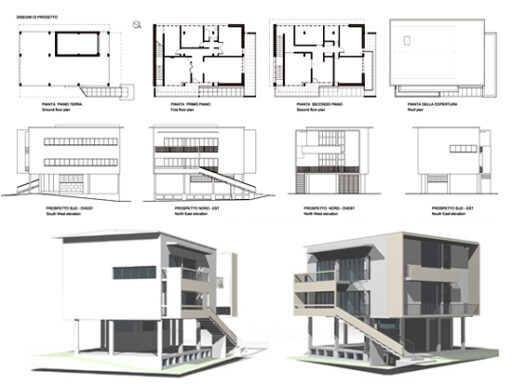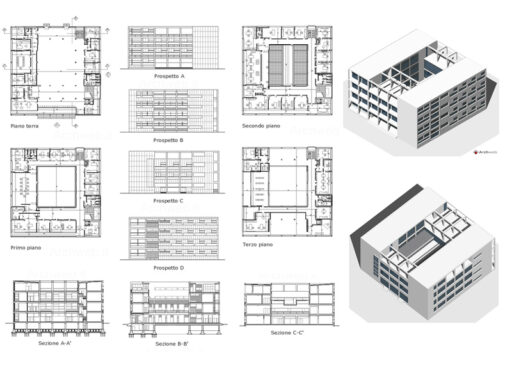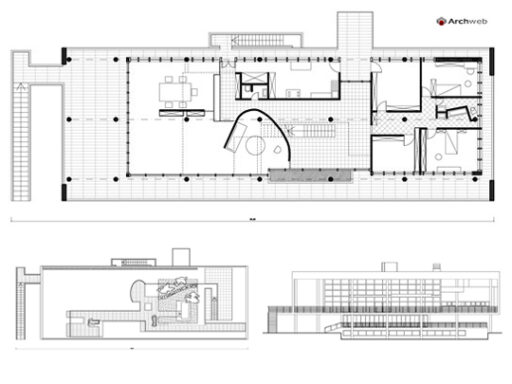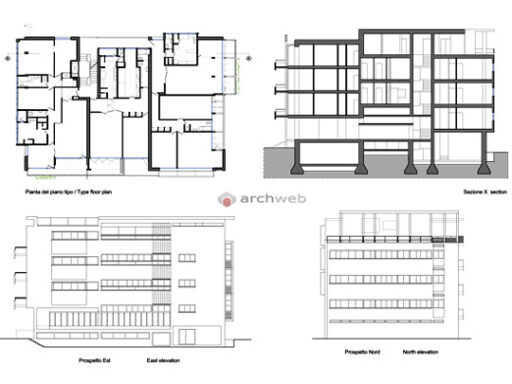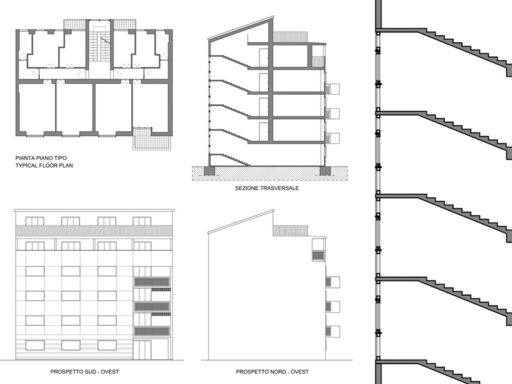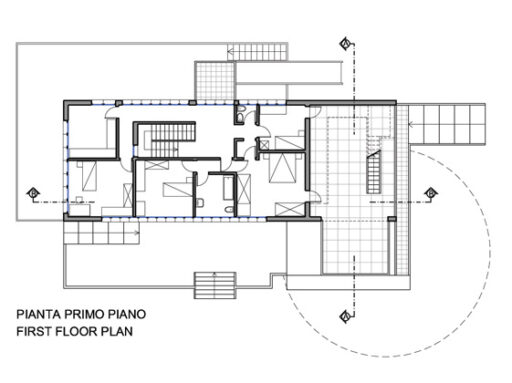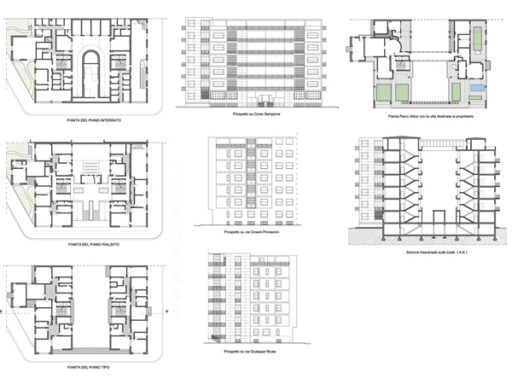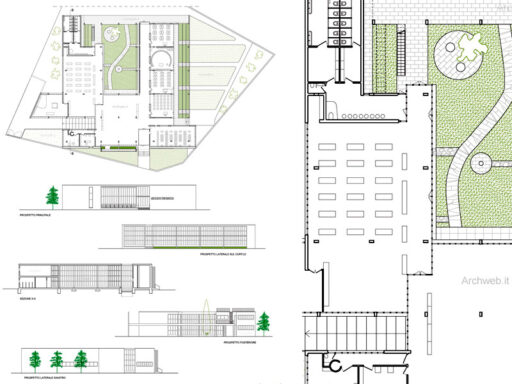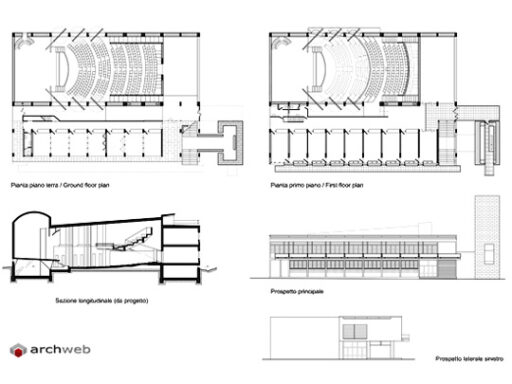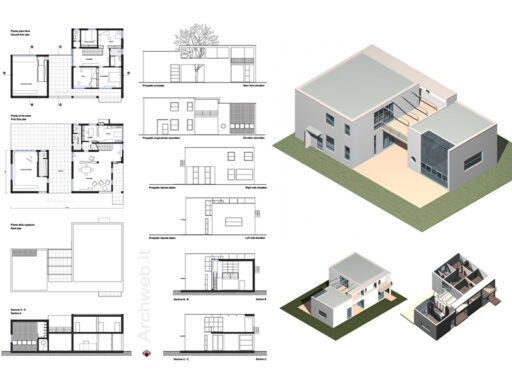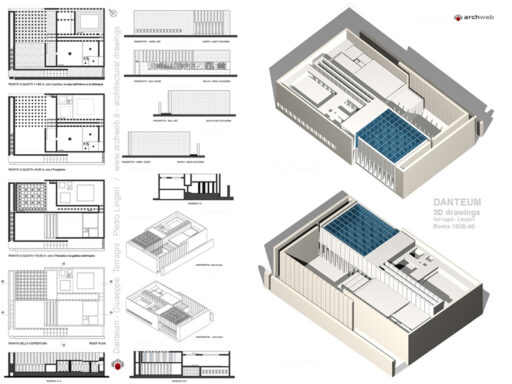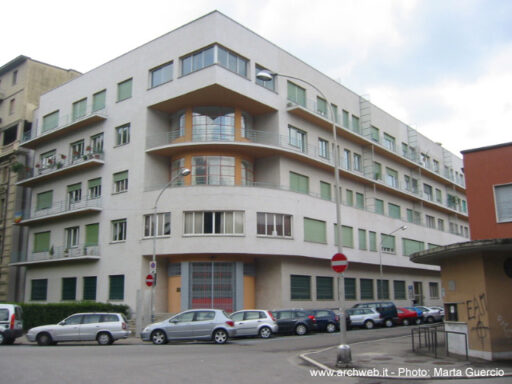Giuseppe Terragni
Writings and anecdotes
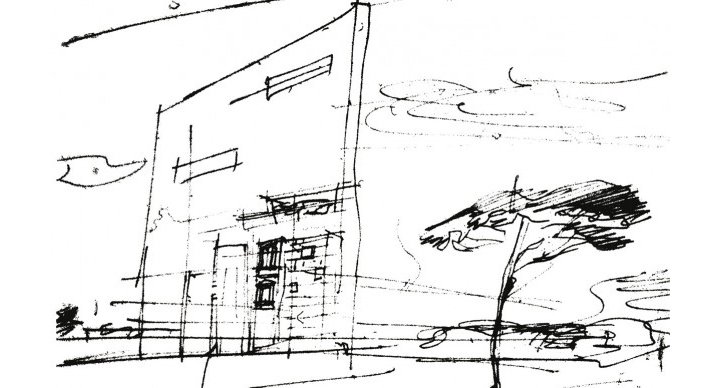
“Architecture, an index of civilization, arises clear, elementary, perfect when it is the expression of a people that selects, observes and appreciates the results that, painstakingly reworked, reveal the spiritual values of all peoples.”
Giuseppe Terragni
About the Novocomum
In 1927 the Novocomum real estate company commissioned the architect Giuseppe Terragni, just twenty-three, the erection of a large apartment building.
Terragni designed a building with a traditional layout, according to functional schemes still linked to the intensive construction of the early twentieth century, but covering it with a completely new architectural guise, inspired by the models of the international avant-garde, with elements taken from rationalism and expressionism Germans, and from Soviet constructivism (eg Golosov’s “SM Zuev” workers’ club in Moscow).
At the beginning of 1928 the project was presented to the Municipality to obtain the building permit; fearing that it might be rejected for its avant-garde architecture, Terragni, in agreement with the impresario, presented some tables not matching the project, which represented a building with neoclassical facades. When the construction was finished and the scaffolding removed, a scandal broke out, and the technical office appointed a commission of experts, chaired by the architect Portaluppi, to decide what to do; this, despite the controversy, established that the building did not damage the decor of the place. Having obtained this first victory, the Novocomum entered by right in the history of Italian architecture.
Testimonials about Terragni about his way of working in the studio
“By inserting hints of landscape of particular importance with colored pencils […] he worked with the cigarette between his lips on scattered sheets of ash and rubber residues deriving from the erasures that from time to time he rejected with a breath at the edge of the sheet or on the cat that was almost always lying on the files. “
Luigi Zuccoli
“Other times he was seen arriving dressed in his coat – there was always his cat on the work table, a messy work table – he would move the cat, then, half seated, half standing, he hours. “
Alberto Sartoris
“Giuseppe Terragni was actually a tireless worker, usually holing up in his small personal studio, a ‘project cell’. Where he was locked up for hours, in the company of his beloved and inseparable cat; constantly and relentlessly splashing, superimposing idea on idea, solution a solution, isolation that did not allow and allowed interruptions and violations by us collaborators “.
Ico Parisi
“He worked in a small room full of drawings and books with the cat walking around in his hands. He often worked at night so as not to be disturbed; in the morning he stayed in bed late, always with his faithful cat [apparently, ‘Battista’ ] lying at the feet. “
Carlo Scalini
Alberto Sartoris on Terragni’s behavior in the construction site reports:
“When the slabs of the facade arrived, Terragni showed up at the construction site early in the morning: you know, he had two trestles put up, he looked at the slab and, if it had a defect, he smashed it with a hammer!” Because – he said – if I say it’s wrong […] the master builder: Yes, yes, let’s not wear it! he puts it aside, but as soon as I turn my back he puts it back on, and once in place it cannot be removed, because the others go down too … “. He smashed them; he was strong and he was very severe; he was right: they must so be the architects. “
Mario Radice offers this assessment of Terragni in the context of the Modern Movement:
“I have not known anyone since Terragni (even after Cattaneo) who managed to live as we lived, completely estranged from the world of leisure, entertainment, sport, trips, vacation, rest. We thought, we only spoke of art. “






























































